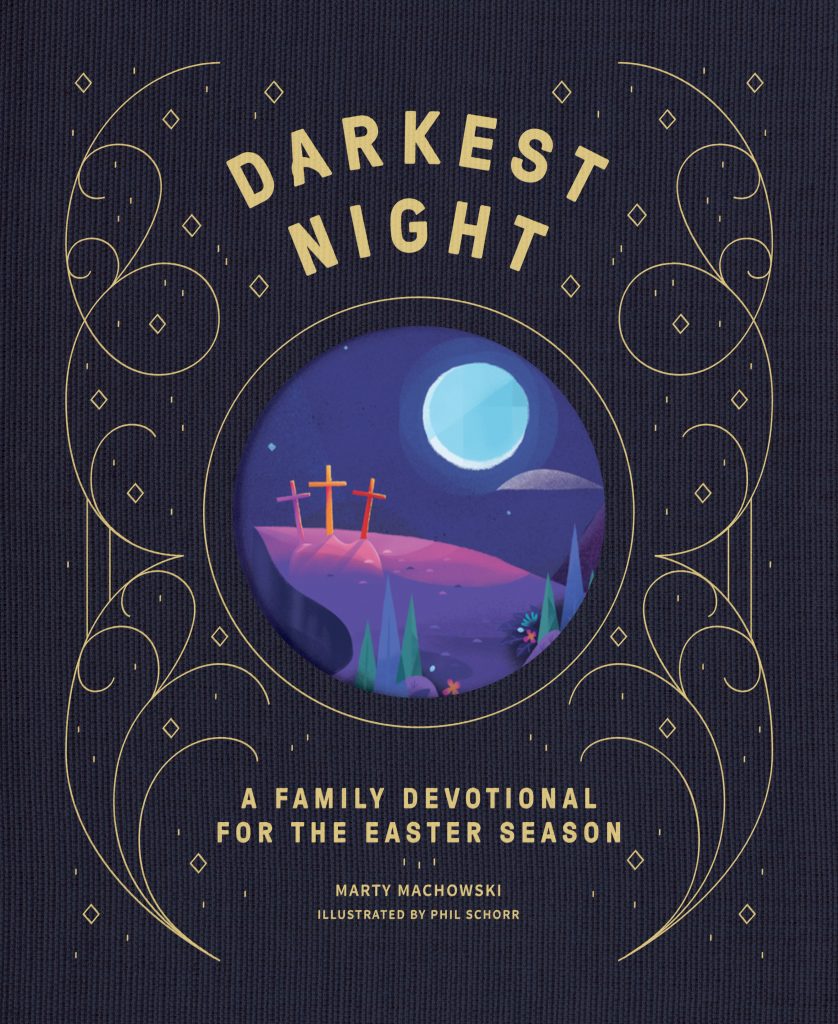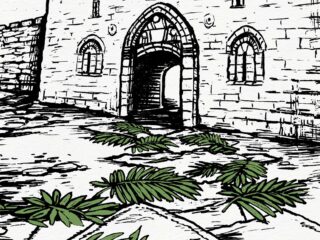On the day of his resurrection, Jesus appeared along the seven-mile-long road to Emmaus and greeted two disciples on their journey from Jerusalem. Luke tells us, “They were kept from recognizing him” (Luke 24:16). The two men were discussing the events of the day, trying to make sense of the death of their rabbi. Devastated by the events of the crucifixion and perplexed by the women’s report that Jesus was alive, they didn’t see how to put the pieces together. Perhaps they hoped Jesus would deliver Israel from Rome. For them, the Scriptures retold Israel’s remarkable history. Still, sadly, they didn’t connect the prophetic dots which could unlock the mystery of Christ and give them hope that the women’s reports were accurate and Jesus was indeed alive.
Everything changed the moment Jesus joined them on the road. Jesus chided them for their slowness to believe but did not scold them for not recognizing him. Jesus said, “O foolish ones, and slow of heart to believe all that the prophets have spoken! Was it not necessary that the Christ should suffer these things and enter into his glory?” And beginning with Moses and all the Prophets, he interpreted to them in all the Scriptures the things concerning himself” (Luke 24:25–27).
Perhaps Jesus met them close to the start of those seven miles and for the next couple of hours gave the two men a tour of the gospel as presented by the prophets of old. Remember, they had no idea that it was Jesus teaching them. But they never forgot what he taught. None of the disciples did. The Old Testament prophets described in detail the life, death, and, resurrection of Christ hundreds of years before his incarnation. Paul later described the message this way, “For I delivered to you as of first importance what I also received: that Christ died for our sins in accordance with the Scriptures, that he was buried, that he was raised on the third day in accordance with the Scriptures,” (1 Corinthians 15:3–4)
As Jesus taught the two disciples on the day of his rising, their hearts caught fire. Their spirits blazed as the realization began to dawn on them that Jesus was the promised Son of Adam to crush the head of the serpent (Genesis 3:15), the prophet like Moses (Deuteronomy 18:15), the King to sit on the everlasting throne of David (2 Samuel 7:16), the suffering servant foretold by Isaiah (Isaiah 53:1–9) and more.
After Jesus revealed himself with the breaking of bread at the end of the day, the two men finally recognized it was Jesus. But no sooner did they realize their Lord was alive and standing before them that Jesus vanished from their sight! But as the two reflected on their encounter, it wasn’t the sudden disappearance of Jesus they referenced to mark the moment; it was the teaching of the gospel from the Old Testament that amazed them. They said to one another, “Did not our hearts burn within us while he talked to us on the road, while he opened to us the Scriptures?” (Luke 24:32).
Today we need not wonder what Jesus said to the men along the road that day. The disciples recorded the prophetic connections in the New Testament. Reading through the connections they made is kind of like taking your own walk down the Emmaus road. When you see the specific detail foretold by the prophets and realize that the whole arc of Scripture points forward to Jesus, you too will be amazed, and your heart will catch flame like that of the disciples. Take a walk along the road to Emmaus by reading the following Scriptures from the New Testament.
- Every sacrifice points forward to the sacrifice of Jesus (Hebrews 10:1–4).
- Every King who sins points forward to the King of Kings who is without sin (Hebrews 1:8–9).
- Every priest who offers a sacrifice points forward to Jesus, the Great High Priest (Hebrews 7:23–25).
- Every prophet points forward to Jesus, the living Word of God, who became flesh and dwelt among us (John 1:14–18).
- The nation of Israel points forward to the sons and daughters of God who make up his people, the church (1 Peter 2:9–10).
- The tabernacle and temple point forward to Jesus, who came to live among his people (John 1:14).
- The manna points to Jesus, the bread of life (John 6:30–40).
- The serpent on the pole is a picture of Christ on the cross (John 3:14–15).
- The rock in the wilderness is a picture of Jesus receiving the judgment of God for the sins of the people of God (1 Corinthians 10:1–12).
Beyond these allusions to Christ in the narrative you discover key men who foreshadow Christ. Moses stands as the mediator between God and the people who offers up intercession on their behalf, staying God’s hand of judgment. Melchizedek is the eternal priest/king. Hosea takes back the unfaithful bride, Boaz redeems Ruth and becomes the great far off grandfather of Jesus.
In addition to all these, there are a few key passages full of details so specific they appear as though they were written after the death of Christ. Psalm 22 contains crucifixion details such as, the piercing of hands and feet, (Psalm 22:16), the casting of lots for the garments of Jesus (Psalm 22:18), and a prediction that the people looking upon our crucified Lord would mock Jesus, shake their heads, and challenge him to be rescued if he indeed is the Christ, (Psalm 22:7-8).
Most amazing of all the Old Testament, Isaiah 53 and the account of the suffering servant hold the rescue plan of the gospel the clearest of any passage in the Old Testament. “Surely he has borne our griefs and carried our sorrows; yet we esteemed him stricken, smitten by God, and afflicted. But he was pierced for our transgressions; he was crushed for our iniquities; upon him was the chastisement that brought us peace, and with his wounds we are healed. All we like sheep have gone astray; we have turned—every one—to his own way; and the LORD has laid on him the iniquity of us all” (Isaiah 53:4–6).
Darkest Night Brightest Day
Start a new Easter season tradition with your family by reading this “upside-down” book from Marty Machowski. The first side, Darkest Night, has seven stories that recount the events of Passion week ending with Christ’s crucifixion and burial. Flip the book over and continue by reading Brightest Day with seven more stories that progress from Christ’s resurrection through Pentecost.






